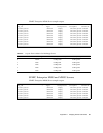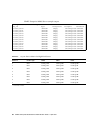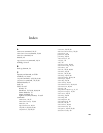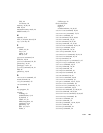
100 SPARC Enterprise Mx000 Servers Administration Guide • April 2007
domain A set of one or more system boards that acts as a separate system capable of
booting the operating system and running an operating system independently
of any other domains. Domains that share a system are characteristically
independent of each other.
Each domain is based on the logical system board that is assigned to it.
Further, each domain is electrically isolated into hardware partitions, which
ensures that any failure in one domain does not affect the other domains in the
server.
Domain - SP
Communication
Protocol (DSCP) Protocol which provides a user-level to user-level TCP/IP sockets type
communication between the Service Processor and a domain. This
communication occurs over a mailbox type of communication provided by
other software components.
DSCP See Domain - SP Communication Protocol (DSCP).
dynamic
reconfiguration (DR) Enables logical attachment and detachment of system boards to and from the
system without causing system downtime. This is the process of physically
installing or removing a system board while the Solaris OS is running.
Enables boards to be electrically isolated (deleteboard) from a domain so
they can be physically removed from the system or added to a different
domain; or to be electrically reattached (addboard) so they can be inserted
into a running server or assigned to a different domain.
environmental
monitoring The monitoring done through a large number of sensors that monitor
temperature, voltage, and current. The Service Processor software polls devices
in a timely manner and makes the environmental data available. The Service
Processor shuts down various components to prevent damage.
eXtended system board
(XSB) eXtended System Board combines the hardware resources of a physical system
board. The SPARC Enterprise servers can generate one or four XSB(s) from one
physical system board: Uni-XSB and Quad-XSB.
eXtended System
Control Facility
(XSCF) The software that runs on the Service Processor and provides control and
monitoring functions for the system platform.
failover Process by which the active Service Processor transfers control to the standby
Service Processor or the standby Service Processor takes control over from the
active Service Processor. In either case, the previously standby Service
Processor becomes the active and the active Service Processor becomes the
standby.


















